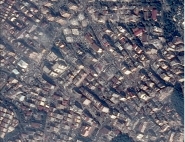Precision agriculture
| Precision agriculture serves to optimise input (fertilizers) depending on the state of the crops, the soil and the environment while taking the spatial heterogeneity of the parcel into account. By associating new technologies such as geographic location by satellite and micro-computing, it offers real prospects of taking the heterogeneity of each plot into account in crop techniques. |
Soil characteristics, topography, pest invasions and the presence of weeds can vary considerably over a limited area. Although farmers have been well aware of this phenomenon for a long time, intra-plot variability has always been dealt with in a uniform manner.
Precision agriculture, on the other hand, consists in modulating and locally adapting farming operations and input (seed, irrigation water, fertilisers, fungicides, weed killer, insecticides, etc.). and adapting all agricultural work to the heterogeneous characteristics of a plot. This is already done in the United States, in very different conditions to those experienced in Europe.
With the help of research, precision agriculture is likely to optimise the agronomic results of European plant production while limiting their impact on the environment.
This market is growing rapidly. It concerns service and consultancy activities (consultants, co-operatives, firms, etc.) and distribution and collection. The main crops concerned are wheat, barley, corn, oil-yielding plants and cotton or even rice.
